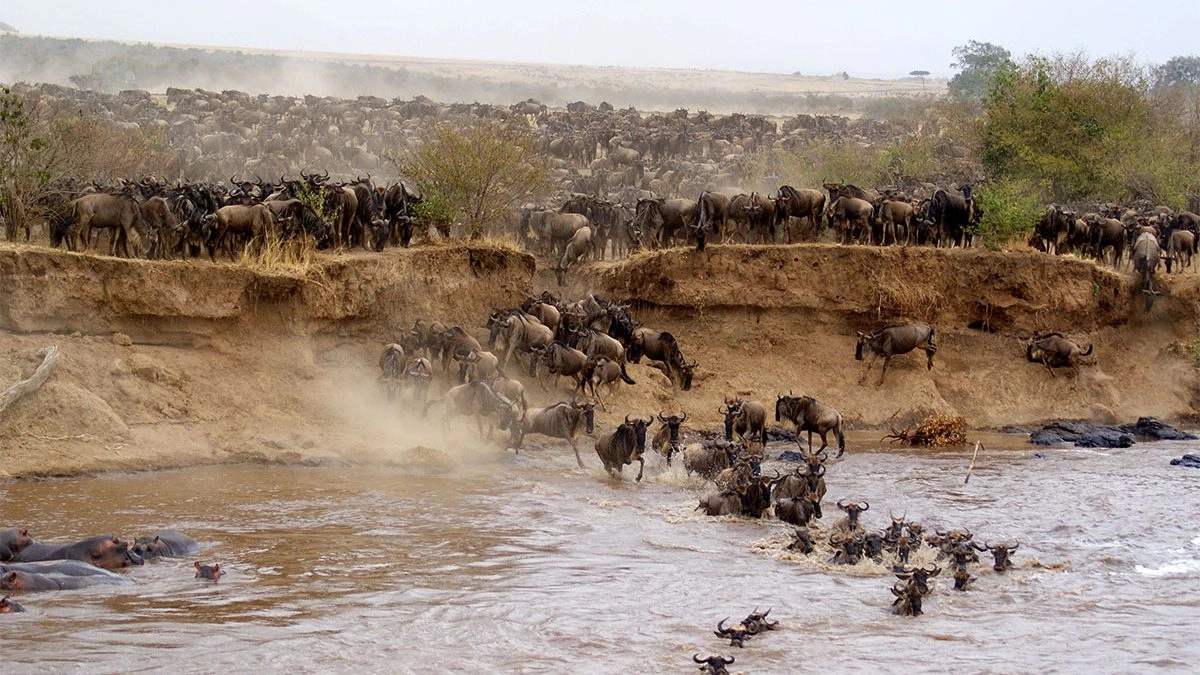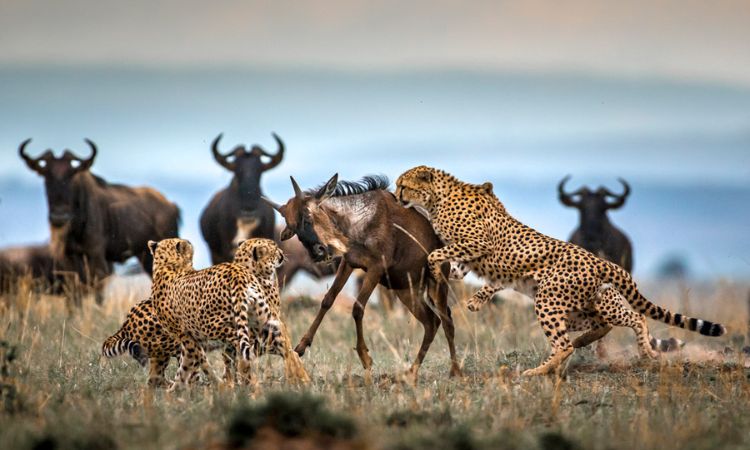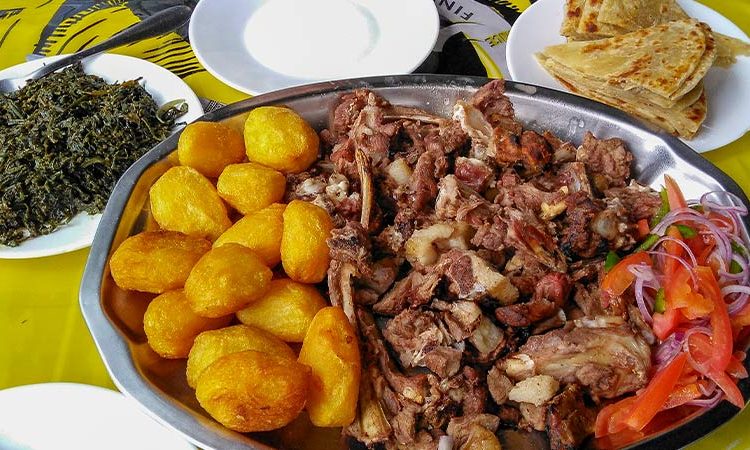- GET IN TOUCH WITH US:
- +256 753518160
- +256 777842166
- info@experiyatourcompany.com

What makes the Maasai Mara famous?
November 17, 2025
How long does the Great Migration last?
November 17, 2025When Is the Great Migration in Kenya?
The Great Migration is one of the most extraordinary natural events on the planet, an annual cycle of movement that sweeps across the vast plains of East Africa. It is a spectacle defined by pounding hooves, swirling dust, predator pursuits, and the relentless search for water and fresh grazing. For many travelers, witnessing this event in Kenya’s Maasai Mara is the pinnacle of the safari experience. But to see the Great Migration at its most dramatic moments, you need to understand the timing, seasonal patterns, and nature-driven rhythms that guide millions of animals on their journey. Knowing when the Great Migration reaches Kenya is essential for planning a trip that aligns with the most unforgettable scenes.
Understanding the Great Migration
The Great Migration is a continuous loop, not a single event confined to one month or even one season. It involves more than 1.5 million wildebeest, accompanied by around 300,000 zebras and hundreds of thousands of Thomson’s gazelles, elands, and impalas. These animals roam across the Serengeti-Mara ecosystem in Tanzania and Kenya, following the rains and the growth of new grass.
While the migration is often described in terms of dramatic river crossings or vast herds spread across rolling plains, it is fundamentally driven by survival. The animals move in response to rainfall patterns, food availability, and water sources. Because nature does not operate on a fixed calendar, the timing of their movement varies slightly each year, but recognizable patterns make it possible to estimate when herds will reach Kenya.
The Kenya Phase of the Great Migration
The Great Migration typically enters Kenya’s Maasai Mara between July and October, making this period the prime time for travelers who want to witness the river crossings, predator hunts, and immense gatherings of animals. The arrival depends on rainfall in the Serengeti and the Mara. If rains in the north come early, the herds may cross into Kenya in late June; if rains linger in Tanzania, the movement may happen later in July.
Once the herds arrive in the Maasai Mara, they spread across its lush grasslands, taking advantage of abundant food after the long journey from the southern Serengeti. The ecosystem here offers ideal grazing, and this attracts not only herbivores but large numbers of predators. Lions, cheetahs, leopards, hyenas, jackals, and crocodiles seize the opportunity to hunt, creating some of the most dramatic wildlife encounters of the entire migration.
July: The Anticipation Builds
By July, the first waves of wildebeest begin gathering near the Sand River and the Mara River. Small groups may attempt early crossings, but the massive herds typically build up over several days or weeks before bravery overcomes hesitation. This is a month filled with anticipation. Travelers can often witness large columns of wildebeest marching north, dust rising behind them as they slowly make their way toward Kenya.
The landscape during July is a mix of dry plains and fresh grass patches brought on by scattered showers. Predators lurk around known crossing points, waiting patiently for the perfect moment to strike. For travelers, July is often the start of peak safari season in the Mara.
August: Peak River Crossing Season
August is considered the prime month for witnessing the Great Migration in Kenya. By this time, the majority of the herds have entered the Maasai Mara or are actively crossing the Mara River. This is when travelers have the highest chance of seeing mass crossings—thousands of animals plunging into the water, fighting strong currents, and navigating the jaws of enormous Nile crocodiles.
The crossings are unpredictable. Some crossings last only a few minutes, while others can stretch for an hour or more. Sometimes the herds gather at the riverbank, study the water for hours, and then suddenly turn around and retreat. But when they do decide to cross, the experience is spectacular and unforgettable. The mix of danger, noise, chaos, and sheer natural beauty is unmatched.
The plains meanwhile are filled with energy. With so much movement and activity, predators are highly active. Lions often target isolated young wildebeest, while cheetahs take advantage of open spaces to chase fleeing gazelles. The Mara becomes a living drama during this time, with every corner offering something captivating.
September: Abundant Wildlife and Final Crossings
September is an excellent month to visit the Maasai Mara for the Great Migration. By this time, the herds have spread widely across the reserve, grazing on fresh grass and attracting predators in large numbers. The frequency of river crossings is slightly lower than in August, but they still occur, especially when animals move toward new grazing zones or shift between the main reserve and the Mara Triangle.
This is the month when the Mara is at its fullest. The grass remains short from constant grazing, making wildlife easier to spot. The weather is generally dry, roads are accessible, and sightings are consistently rewarding. September offers a balance of dramatic migration scenes and relaxed game viewing, making it ideal for photographers and first-time safari travelers.
October: The Journey Back to Tanzania Begins
By October, the rains in the Serengeti begin to pick up again, triggering the herds’ southward return. Many wildebeest start drifting toward Tanzania, though some remain in Kenya through early November depending on conditions. River crossings are less frequent, but still possible. The Mara continues to offer exceptional safari experiences as herbivores and predators remain active across the plains.
While the migration slowly heads back toward the Serengeti, October is still a great month to visit the Maasai Mara. The crowds begin to thin slightly compared to August and September, and the weather remains pleasant. Travelers who prefer a quieter migration safari often find October to be the perfect time.
Why Timing Matters for Travelers
Understanding the timing of the Great Migration in Kenya helps travelers make informed decisions about when to book their safari. While July to October is the window of opportunity, the specific experience varies by month. For example:
July offers the excitement of the herds’ arrival and early crossings.
August provides the highest chance of dramatic mass river crossings.
September gives travelers abundant wildlife and consistent viewing.
October offers quieter plains and the final moments of the migration in Kenya.
Regardless of the month, the Maasai Mara offers a rich and immersive wildlife experience. Even outside the migration season, the Mara remains one of Africa’s most rewarding safari destinations due to its large big cat populations, birdlife, and breathtaking landscapes.
What Travelers Should Know When Planning
Safari planning for the Great Migration requires early booking, particularly for August and September. Lodges and camps fill up months in advance, and game drive permits in some conservancies may become limited. Weather is an important factor as well. Although the migration is shaped by rainfall, the Maasai Mara generally experiences a dry season from June to October, making game drives comfortable and predictable.
Travelers should also choose camps strategically. Properties located near the Mara River or in the Mara Triangle often offer quicker access to crossing points. Private conservancies such as Olare Motorogi, Naboisho, and Ol Kinyei provide exclusive game viewing without the crowds, making them excellent choices for those seeking a more intimate safari.
Finally, the experience of the Great Migration is best enjoyed with a knowledgeable guide. Professional guides understand the behavior of the herds, track their movements, and position visitors at the best vantage points without disturbing the animals.
Book Your Great Migration Safari with Experiya Tour Company
Witnessing the Great Migration in Kenya is a life-changing experience. The thunder of hooves, the tension at the riverbanks, the vast herds sweeping across the plains, and the breathtaking interaction between predators and prey create a safari adventure like no other. To ensure you experience this natural wonder at the right time and in the best locations, partner with experts who know the Maasai Mara intimately.
Experiya Tour Company offers personalized safari planning, experienced guides, handpicked accommodations, and deep knowledge of the migration’s movement. Whether you wish to witness dramatic river crossings or enjoy peaceful game drives surrounded by thousands of grazing animals, Experiya Tour Company ensures your journey is seamless, memorable, and perfectly timed.




